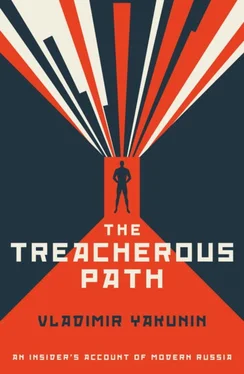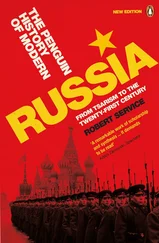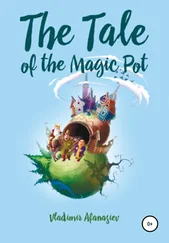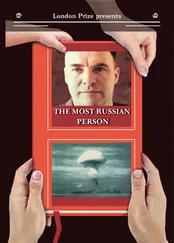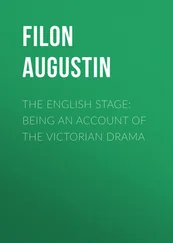There was also substantial resistance externally from institutions like the World Bank, who refused to support the Ust-Luga project, arguing that because Russia could use the Baltic ports, it should not develop its own (I was told this personally by someone from the World Bank). This was at the same time as our rivals were receiving political and financial support from the West. In 1998, the Baltic states and the US signed a document called the ‘US–Baltic Charter’, a significant statement of intent which committed Estonia, Latvia and Lithuania to supporting the work and values of the big Western international institutions such as the WTO, NATO and the EU. It was a decisive turn away from Russia, and a sign that the relationships that had once sustained the Warsaw Pact had been reduced to nothing more than a memory.
But, perhaps just as severely, there was huge internal opposition. In the years in which Russia did not possess its own port infrastructure in its north-west, it was inevitable that the exporters would seek a relationship with Baltic states. And to them, unsurprisingly, the development at Ust-Luga represented a threat. After all, huge volumes of Russian oil were being shipped through the Baltic ports, at Tallinn more than any other commodity. A company like Global Ports Investments PLC, which owned an oil terminal at the Muuga port in Tallinn, and whose major clients were Russian oil companies, had much to lose. As did Gunvor, the huge oil trading company that had interests in Tallinn, and Kinex, one of Russia’s first privately owned oil trading companies, that held 50 per cent of the shares in the Sillamäe port in Estonia. These were huge enterprises, with massive resources, which could exert a real sway – imagine the influence that companies such as BP or Shell could bring to bear if they wanted to obstruct a project that conflicted with their interests. Formal lobbying of government officials was accompanied by carefully worded phrases delivered into the ears of those close to the levers of power, and a concerted campaign in the press (‘Why bother with this white elephant when we already can use the Baltic ports? It’s a waste of time and money!’ ‘They’re crooks! If you give them any kind of support, that cash will vanish; we’ll never see it again.’)
Perhaps if after Boris Yeltsin had made his declaration regarding the foundation of Ust-Luga in 1993 he and the government he led had actually buttressed it with decisive policies, or even just made it clear publicly that they supported the project, then things would have been different. But the ambiguous messages that emerged from the Kremlin failed to make it clear that there was outright support, which gave many licence to ignore or obstruct our work. (Though given the adverse economic conditions, and the fact that as much as half of the orders that emerged from the Kremlin at the time were being ignored, an argument could be made that there was little even someone with a strong desire to help us could have done.) One concrete step that Moscow could have taken – but always shied away from – was the introduction of punitive tariffs to encourage Russian carriers to send their cargo through Ust-Luga. It would have made our progress immeasurably faster. Even when President Putin came to power, some in his close circle lobbied against the idea. But if he did not introduce the tariffs we were looking for, Mr Putin was supportive in many other ways, not least by communicating clearly that the Kremlin stood firmly behind Ust-Luga. In 2001, during one particularly critical phase in the port’s development, he called a government meeting where he announced that the work at Primorsk, Ust-Luga and other port developments was being sabotaged and that the ‘saboteurs are sitting in this very room’. Things changed substantially after this intervention.
I remember vividly how in 2006 Mr Putin came to the port for the first time to take a look at the progress of the project. By this point I had joined Russian Railways, but because of my long history with the project, and also the existence of a substantial rail development at the port, I had insisted he should come because I wanted him to see with his own eyes what we had built. After all, it was at the time the sole major infrastructure project in the whole country to be anywhere close to fulfilment. We looked together at the fully operational terminals and I showed him the ones that catered for the super-cargo ships; I talked him through the plans we had to introduce fully automated sorting stations (which remain the only ones in existence in Russia), and then, as I escorted him to his helicopter, he turned to me and told me that he was both surprised and pleased. He said that some of the men around him had told him it would be a mistake to go because all he would see would be empty fields, at best a degraded Potemkin village; that it would be a disgrace for the President to be associated with it. But now I could tell from his body language that he was not just surprised, he was proud.
Putin’s visit was a big statement of political intent. It encouraged those bureaucrats who had previously been dragging their feet to take it more seriously and was a clear sign to businessmen of the direction in which government policy was heading. I knew there had been a decisive change in the atmosphere when a good friend, who was the owner of one of the firms who had previously invested heavily in a terminal at Tallinn, came to me to complain about a reprimand he had received from his wife. He had been running his mouth off about Ust-Luga and the trouble he claimed it was causing him when his wife suddenly interrupted him. ‘You’re a traitor,’ she told him. ‘You don’t think about the interests of your country, you think only about your bottom line. Mr Yakunin has the right idea; he’s doing the correct thing!’ I could not help but smile as the owner told me that since I was ruining his family life, he would need to change his attitude to my project.
Businessmen are clever people and they do not operate in a vacuum – their livelihood depends on more than just the numbers on their spreadsheets. If the mood of the authorities changes, then so do the plans of tycoons. And when the oil-trading behemoth Gunvor made the decision to build a terminal at Ust-Luga in preference to other ports, we realised that the tide had turned. That such a big company, which was effectively created in Tallinn and had such close links to the Baltic ports, had chosen to invest in our development was a hugely significant indication of our success.
From that point on, progress accelerated rapidly. In less than a decade the cargo turnover at Ust-Luga grew from 0.8 million tonnes to almost 80 million tonnes. At the beginning of the development, we had only dreamt of handling 30 million tonnes of cargo, but now it is easy to see how it would be possible to develop the port to 100 million, or even 120 million tonnes. No other Russian port in the Baltic has seen such growth. In 2008, Ust-Luga’s share of the freight volume passing through Russia’s Baltic ports was 9 per cent; by 2013, that figure had risen to 78 per cent. There are eleven terminals currently operating in the port, including ones for coal, general cargo, sulphur, containers, timber and oil. It is already one of the biggest ports in Europe and the second-largest in the Baltic Sea (and handles as much cargo as the rest of the Baltic ports added together), and it is going to be, possibly, if not the largest, definitely one of the two largest ports in Europe.
It is hard now not to be reminded of a comment Mr Izrailit made when he first came to look at the site of the project he had taken on. ‘We arrived there and it was like the Tunguska meteorite had landed: trees felled, land turned upside down, a mound of sand leaking into the bay, and some miserable-looking swans swimming nearby.’ We had talked during the project’s earliest days about how we could make Ust-Luga into another Amsterdam or Rotterdam; it had seemed almost like a joke. That the management of the port of Tallinn, our main competitor, sent us a telegram of congratulations after our own project’s opening ceremony was a sign that our efforts were being taken seriously. And nobody would laugh at our founding ambitions now.
Читать дальше
